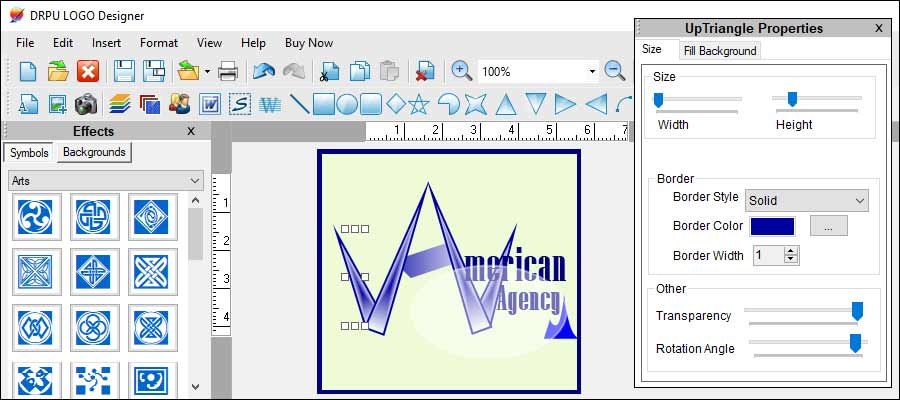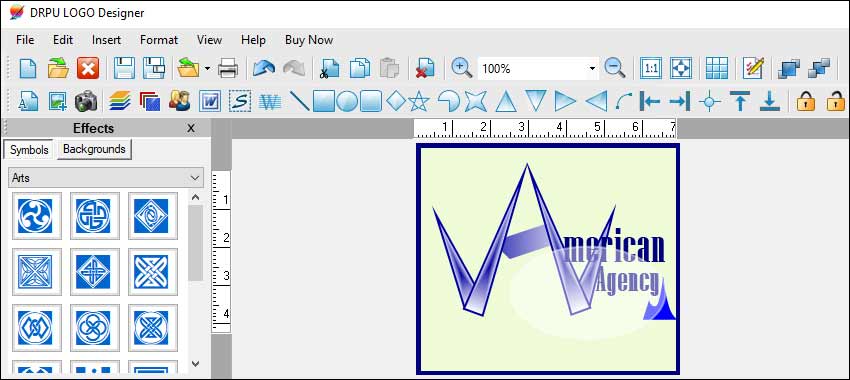Using a Logo Designer to Create a Logo for Business
Yes, you can definitely use a logo designer to create a logo for your business. Hiring a professional logo designer can be a great investment as they have the skills and expertise to create a visually appealing and impactful logo that represents your business effectively. Here are some details on how the process typically works:

-
Finding a Logo Designer:
You can start by researching and finding logo designers either locally or through online platforms like facebook, instagram, linkedin, etc. There are numerous freelance websites, design agencies, and even individual designers who specialize in logo design. Look for designers with a strong portfolio and positive reviews from their previous clients.
-
Initial Consultation:
Once you've identified a logo designer or a few potential candidates, you'll typically have an initial consultation. This can be done in person, over the phone, or through video conferencing. During this consultation, you'll discuss your business, its values, target audience, and any specific ideas or concepts you have in mind for your logo. This information helps the designer understand your vision and goals.
-
Design Brief:
After the initial consultation, the logo designer will create a design brief based on the information you provided. The design brief outlines the key aspects of the logo project, including the design objectives, target audience, preferred colors, fonts, and any other specific requirements or constraints.
-
Concept Development:
The logo designer will begin the creative process by developing multiple logo concepts based on the design brief. They will explore different ideas, typography, symbols, and layouts to create a range of options for you to consider. These concepts are usually presented as digital sketches or rough drafts.
-
Feedback and Revisions:
You'll have the opportunity to review the initial concepts and provide feedback to the logo designer. This is an important stage as it allows you to share your thoughts and any necessary changes you'd like to see. The designer will revise the concepts based on your feedback and refine them.
-
Finalization:
Once you are satisfied with the revised logo concepts, the designer will finalize the chosen logo. They will pay attention to details, refine the design elements, and create different file formats and variations suitable for various applications (e.g., print, digital, social media, etc.).
-
Delivery:
Once the logo design is finalized, the designer will deliver the files to you. Typically, you will receive high-resolution files in different formats (such as JPEG, PNG, and vector files like AI or EPS) to ensure the logo can be used effectively across various platforms and mediums.
The Importance of Color Selection in Logo Design
Label designer software has come a long way in recent years, with a range of emerging technologies and features that can help users create more advanced and effective labels.
Here are several key reasons why color selection is important in logo design:-
Brand Identity and Differentiation:
Colors have the power to create a distinctive brand identity. When chosen wisely, colors can help a logo stand out among competitors and make a lasting impression on the audience. Consistency in color usage across various brand assets helps in brand recognition and brand recall.
-
Emotional Connection:
Colors have the ability to evoke emotions and elicit specific responses from viewers. Different colors are associated with different feelings and moods. For example, warm colors like red and orange can convey energy, passion, and excitement, while cool colors like blue and green can evoke calmness, trust, and reliability. By strategically selecting colors that align with the brand's personality and target audience, designers can establish a strong emotional connection between the logo and the viewer.
-
Communication of Brand Attributes:
Colors can effectively communicate specific brand attributes and qualities. For instance, a healthcare brand might use shades of blue to communicate trust, professionalism, and a sense of well-being. On the other hand, a youthful and energetic brand might opt for vibrant and bold colors to represent their dynamic and adventurous nature. The right color palette helps reinforce the intended brand message and values.
-
Cultural and Contextual Considerations:
Colors can carry cultural meanings that vary across different regions and societies. A color that symbolizes positivity in one culture might have negative connotations in another. It is important for designers to be aware of these cultural nuances and ensure that the selected colors align with the brand's target market. Additionally, considering the context in which the logo will be used, such as on different backgrounds, helps ensure that the colors remain impactful and legible.
-
Visual Hierarchy and Readability:
Color selection plays a significant role in establishing visual hierarchy within a logo design. By using contrasting colors, designers can draw attention to specific elements or create a clear focal point. Colors can also enhance readability by providing sufficient contrast between text and background, making the logo more accessible and legible across different platforms and sizes.
-
Psychological Impact and Recall:
Colors have a psychological impact on individuals, influencing their perception and memory. Studies have shown that people tend to remember colors more vividly than other design elements. By incorporating memorable and well-chosen colors, designers can enhance the logo's recall value and make it more memorable for the audience.
In summary, color selection in logo design is crucial for establishing brand identity, evoking emotions, communicating brand attributes, considering cultural and contextual factors, creating visual hierarchy, enhancing readability, and leaving a lasting impression on viewers. It is a powerful tool that designers can leverage to create logos that are visually appealing, meaningful, and representative of the brand's values and message.
Protect Logo Design from being Copied or Stolen
Protecting your logo design from being copied or stolen is essential for maintaining the integrity and uniqueness of your brand. While it's important to note that I am an AI language model and not a legal expert, I can provide some general guidelines on how to protect your logo design.

Here are several steps you can take:
-
Trademark Registration:
Registering your logo design as a trademark is one of the most effective ways to protect it. A trademark provides legal rights and exclusivity to use the logo in connection with your products or services. Conduct a thorough search to ensure your logo doesn't infringe on an existing trademark, then file an application with the relevant intellectual property office in your country. Consult with a trademark attorney to navigate the process smoothly.
-
Copyright Protection:
Although logos can be protected by copyright as artistic works, it's important to note that copyright primarily covers the expression of an idea rather than the idea itself. Nonetheless, copyright protection can be useful in cases of direct copying. In many countries, copyright protection automatically applies as soon as you create the logo, but registering your copyright can provide additional legal benefits.
-
Document Your Creation Process:
Keep detailed records of the logo design creation process, including sketches, drafts, and any design iterations. This documentation can serve as evidence of your original work and can be valuable in case of any legal disputes.
-
Watermarking:
When showcasing your logo design online or in digital formats, consider adding a visible watermark to the image. Watermarks can deter unauthorized use and make it more difficult for others to claim your design as their own.
-
Non-Disclosure Agreements (NDAs):
If you need to share your logo design with the external parties, such as designers, contractors, or collaborators, have them sign non-disclosure agreements. NDAs legally bind the parties involved to maintain confidentiality and prevent them from sharing or using your logo design without your permission.
-
Monitor and Enforce:
Regularly monitor the use of your logo online and offline. Conduct searches and use tools to track potential infringements or unauthorized use. If you come across any unauthorized use, consult with a legal professional to understand your options and take appropriate action, such as sending cease and desist letters or filing infringement claims.
-
Use License Agreements:
If you decide to grant permission for others to use your logo, establish clear guidelines through license agreements. These agreements outline the terms and conditions under which others can use your logo, while still retaining your rights as the original creator.
Make Sure that Logo Design is Suitable for the Target Audience
Designing a logo that resonates with your target audience requires careful consideration and research.
Here are several steps you can follow to ensure your logo design is suitable for your target audience:-
Define your target audience:
Start by clearly defining your target audience. Consider factors such as age, gender, location, interests, values, and preferences. This will help you understand their needs and expectations.
-
Conduct market research:
Perform thorough market research to gain insights into your target audience's preferences and design trends within your industry. Look at your competitors' logos to identify common themes and elements.
-
Understand your brand identity:
Your logo should align with your brand identity and values. Consider the personality, tone, and style of your brand. Is it modern, traditional, playful, or professional? Understanding your brand identity will guide your design decisions.
-
Gather feedback:
Seek feedback from your target audience throughout the design process. Conduct surveys, focus groups, or interviews to understand their thoughts and preferences regarding logo design elements. Their input will help you make informed decisions.
-
Reflect your brand message:
Your logo should convey your brand's message and values. Consider what emotions or associations you want your logo to evoke in your target audience. For example, if your brand focuses on sustainability, incorporating nature-inspired elements may be appropriate.
-
Keep it simple and memorable:
Aim for simplicity in your logo design. A cluttered or overly complex logo can be confusing and fail to resonate with your audience. Opt for clean lines, clear typography, and balanced compositions. Focus on creating a memorable and easily recognizable logo.
-
Consider color psychology:
Different colors evoke different emotions and can influence how your logo is perceived. Research color psychology and choose colors that align with your brand and target audience. For example, blue is often associated with trust and reliability, while red can evoke excitement or urgency.
-
Typography and font choice:
The typography and font choice in your logo can communicate various messages. Consider the personality of your brand and the readability of the font. Serif fonts can convey tradition and reliability, while sans-serif fonts often project modernity and simplicity.
-
Test across platforms:
Ensure your logo looks good and maintains its effectiveness across various platforms and sizes. Test its readability and visibility on different devices, such as smartphones, tablets, and desktops. It should be scalable without losing its impact.
-
Iterate and refine:
Throughout the design process, gather feedback and iterate on your logo design. Refine the elements, colors, and typography until you reach a design that resonates with your target audience and effectively represents your brand.
Remember, creating a logo that suits your target audience is an iterative process. It requires a deep understanding of your audience's preferences, research, and constant refinement. By following these steps and seeking feedback, you can increase the chances of creating a logo that truly connects with your target audience.